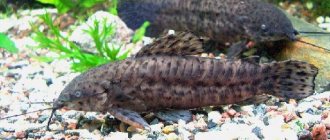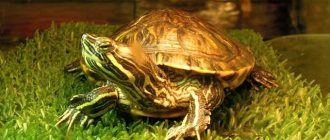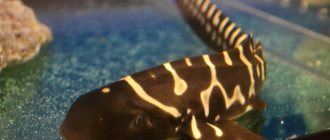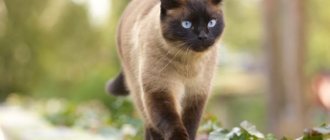The place of furry pets and feathered pets in our families has recently been increasingly occupied by wild reptiles, including land turtles. Their main difference from the usual vertebrates is their cold-bloodedness, sluggishness, and slowness. This must always be taken into account when caring for a land turtle at home.
The family of land turtles has 40 species. The Central Asian (steppe) tortoise is more often kept at home due to its low cost and dimensions suitable for apartments. This species is characterized by a rounded shell of dark olive, reddish or yellow-brown color, up to 25 cm long. In nature, they live in the arid steppes of Central Asia, where they live up to 50 years.
With proper care, the lifespan at home can be forty years. Despite their relatively cheap and easy care, land turtles require careful attention. They need to be carefully looked after.
Conditions of detention
Caring for a land turtle requires the following:
- terrarium
- soil
- house
- feeders
- drinking bowls
- UV lamps
Proper maintenance of a land turtle at home requires the presence of a terrarium. He can be:
- glass (an ordinary aquarium will do);
- wood;
- plastic.
Its size should be 2–3 times the size of the animal for a comfortable existence. The minimum size is 60x40x40. For a 12 cm turtle, the volume of the terrarium should be approximately 80 liters. Place the terrarium above the floor at a height of at least 20 cm.
Important! Turtles do not tolerate drafts, so at home they should not be kept on the floor, where they may also be stepped on or swallow debris from the floor.
Fill the terrarium with soil, the layer thickness is 4 cm. The following are suitable as soil:
- hay;
- sawdust without flavoring;
- pebbles or stones, combine them with sawdust or hay. Choose smooth and flat stones. The pebbles should be slightly larger than the pet's head.
Not suitable as a primer:
- Earth;
- sand;
- cat litter.
It is necessary to care for the soil and clean it daily.
It is useful to place a bathtub in the terrarium as a pool for the turtle, where it should fit entirely. The water level is no more than half the height of the shell. The reptile must be able to get in and out of the pool on its own. There she will happily spend part of her time.
Proper care of a land turtle involves the constant presence of water in the terrarium. There should be a drinking bowl and a feeding trough. A flat plate, bowl, or even a jar lid can be used as a feeder. Do not place the feeder under a lamp, fill it with food for 2 hours a day, then clean it.
The optimal habitat temperature for a land turtle is +20-30C. In winter, reptiles need additional light. Illuminate it with a UV lamp. In pet stores you can choose a special lamp for terrariums. A regular incandescent lamp will also work. The lamp power is calculated as 1 W per liter of aquarium volume. Position it so that the space under the lamp does not heat up above +32C and the turtle can go into the shade. Turn on the lamp in the morning and evening for 2 hours.
Health, disease and prevention
As a rule, most pets, including the red-eared turtle, get sick in most cases due to improper care and maintenance. Dirty and untreated water quickly leads to the fact that the turtle begins to feel unwell, as many harmful microorganisms appear in it. In this case, it is necessary to raise the temperature in her home by a couple of degrees in order to optimize the functioning of the immune system. It is also necessary to ensure that the animal does not experience a lack of moisture (water), otherwise, against this background, kidney failure begins to develop, leading to disastrous consequences.
The fact that something is wrong with the turtle may be indicated by its behavior. When it swims, it can fall on its side or even sink to the bottom. If there is a suspicion of infection, then it is advisable to treat all items for caring for the reptile with an antiseptic that will not cause harm to the animal. Symptoms of bacterial damage are associated with the appearance of edema and necrotic changes. Such diseases require the use of antibiotics for treatment. In this case, you will have to completely replace the water in the aquaterrarium.
If a turtle is injured, an infection can enter its body, leading to blood poisoning. As a result, the animal’s paws turn red, and the turtle becomes quite lethargic and inactive. This type of disease is practically not curable, especially on its own, so you will have to visit qualified specialists. If treatment for your pet is not started in a timely manner, the outcome can be very disastrous.
To prevent this from happening, it is necessary to take preventive measures, such as:
- Inspect your turtle daily.
- Clean the aquaterrarium regularly.
- Change the water regularly.
- Organize proper healthy nutrition.
- Avoid hypothermia.
- Monitor the operation of the heating, lighting and filtration systems.
- Observe personal hygiene rules.
- From time to time, clean the turtle's shell of algae.
- Adhere to the rules for keeping sick or newly purchased animals (quarantine regime).
- Avoid contact of a sick animal with both family members and pets.
- Constantly monitor the turtle's movements outside its home.
- Periodically turn on the UV lamp and expose it to sunlight.
- From time to time, show the animal to a veterinarian.
In case of improper nutrition, the turtle begins to experience a lack of calcium, which leads to curvature and softening of the shell. If there is too much calcium deficiency, your pet may die. In such cases, the veterinarian prescribes drugs with a high calcium content in injections. It is also necessary to know that calcium is absorbed due to the presence of vitamin D in the animal’s body. Vitamin D is produced as a result of UV exposure, so it is very important to regularly turn on the UV lamp.
Pond slider. House maintenance. Interesting Facts.
Feeding
The land turtle is a herbivore. Her diet should consist of 90% plant foods and 10% animal foods. At home, just chop up a green salad from:
- dandelions
- clover
- plantain
- lettuce leaves
- vegetables: carrots, cabbage.
Apples are suitable fruits; you can also give some berries, bran and seaweed.
Feed an adult turtle once every 2-3 days. More frequent feeding can cause problems with the digestive tract. A turtle under 2 years of age must receive food daily. Animal food in the form of ground beef should be added to the animal's food once a week.
Not suitable for feeding turtles:
- potato
- fruit seeds
- citrus peel
- dry food for cats and dogs.
Proper care should include vitamin-mineral complexes and supplements, for example, Reptilife. It is better to purchase vitamins in powders - they allow you to avoid mistakes with the dosage. Calculate the required dose according to the instructions and add it to the food once a week. You can simply put a piece of chalk in the terrarium. If a reptile lacks calcium, it will begin to consume it on its own.
Description of the red-eared turtle
The yellow-bellied turtle received this name due to the presence of red stripes running from the eyes to the ears. Because of this unique feature, the red-eared turtle can be easily distinguished from other species of turtles kept in human environments.
Interesting to know! In conditions favorable for their habitat, red-eared turtles can live for at least 25 years. At the same time, there are individuals that live up to 50 years.
In young individuals, the shell is bright green, but as the turtle grows and develops, this shade becomes brown. In adults, original patterns can be seen on the shell, and each turtle may have a unique pattern. The size of a turtle directly depends on its gender and can range from 18 to 30 cm. Oddly enough, females are larger than males.
How to bathe and water a land turtle
In addition to cleaning the terrarium, you need to care for and monitor the cleanliness of the pet itself. To do this, bathe your turtle regularly (at least once a week). Pour warm water (30-36C) into a container up to 2/3 of the height of the animal. It is recommended to add chamomile solution to the water. In case of bowel movements, change the water.
Soap can be used only if the pet is heavily soiled and no more than once a week. Do not use a brush to remove dirt. Use a soft sponge or cloth. Wash the neck and head with your finger without putting pressure on your pet.
The optimal duration of bathing is 30 minutes. After removing the turtle from the water, wipe it dry with a dry cloth and place it in the terrarium.
Attention! After bathing, you should not leave your pet on the floor, otherwise he will catch a cold.
While swimming, the turtle absorbs water through its skin. Immediately after purchase, it is recommended to bathe your pet at home every day for a week until it is saturated with water, and only then switch to weekly bathing.
Reproduction at home
When turtles live in their natural environment, they begin to reproduce only after reaching 6-8 years of age. When turtles are kept in an artificial environment, they are ready to reproduce at a maximum of 5 years of age. Under natural conditions, the reproduction process begins at the end of February and lasts until May. Having met a female, the male tries to position himself as close to the female’s head as possible.
Important point! At this time, the female moves forward, and the male moves in the opposite direction, while he tries to tickle the female’s chin with his long claws.
When the time comes to lay eggs, the female leaves the pond and heads to land, where she begins to search for a suitable place. After this, she wets the soil with water, which she prudently stored in the anal bladders. Then the female begins to form a nest.
To do this, she uses her hind legs. As a result of the active actions of the turtle, a ball-shaped nest is formed, the diameter of which, depending on the type of turtle, can reach up to 7-25 cm.
The female lays from five to twenty eggs at a time, the diameter of which is up to 4 cm on average. After this process, the turtle covers them with soil. Turtles do not care about their future offspring and immediately climb back into the sea (into the water). Eggs develop at temperatures from +21 to +30 degrees for 3-5 months. When the development of eggs occurs at a temperature of +27 degrees and below, then males are born, and when at a temperature of about +30 degrees and above, females are born.
A crowd of red-eared turtles!
Options for keeping a pet reptile
Turtles are not rare pets, and they are often found among private owners. In addition, it is rare that a zoo, aquaterrarium or animal corner can do without such inhabitants. Often, owners keep their shelled pets in the same way as other pets, allowing the turtle to crawl freely around the house. They place bowls for food and water and even try to introduce the reptile to the tray. That is, the animal remains free and, of course, does not leave the home.
But is such a free life suitable for the turtles themselves? Most zoologists believe that such a situation is unacceptable. You cannot identify a reptile with cats or dogs; it is too different from them, and not only in appearance.
While free, the turtle is in constant danger. She may start eating small debris, get stuck in some device, or get a cold after being in a draft. In addition, there are often cases when the owners themselves stepped on their pet or tripped over its shell. To avoid tragic situations, you should provide your pet with a safe territory - a spacious terrarium, where it will be comfortable and convenient to live.
Hibernation
Hibernation is the period that a turtle enters during the winter months. There is no need for a pet turtle to hibernate! Moreover, it is not recommended! Never encourage her to do this.
Reasons why hibernation may be unsafe:
- you may not have enough experience to care for her at this time
- Most likely, in order for her to hibernate normally, you don’t have the conditions
- young and sick turtles may be too weak to survive the hibernation period
- your turtle may not need it at all
Turtles hibernating in nature burrow into leaves and silt at the bottom of a reservoir, the depth of which is shallow, and vice versa into the surface.
They do not rise to the surface during this time, but absorb oxygen through membranes in the mouth, pharynx and cloaca. In this case, the depth of the reservoir is important so that the water is not too cold, but also contains enough oxygen.
Most artificial conditions and ponds are unable to recreate these conditions.
In general, a pet turtle should not and should not be hibernated. By the way, the key condition here is the water temperature, it must be maintained at 24-26°C. Lower temperatures just remind her of winter and hibernation.
Coating the bottom of the container
It is covered with soil or a bedding of hay. In the first case, the particles of material must be large so that the turtle does not eat too many pebbles. The second option is more summer, since it is not so easy to find hay in winter. It is allowed to fill the bottom with sand, but some reptiles eat it. If such behavior is typical for your pet, then it is better to refuse sand.
Another option is to add a layer of sand and lay a layer of large pebbles on top of it - the pet will sharpen its claws on them. Some species love to burrow, in which case it is worth putting more material in the tank for the turtle to enjoy. You should not use pieces of paper, expanded clay particles, sharp gravel, or litter intended for cat litter boxes, even wood, as soil.
Are walks good for you?
You can take your pet outside; it is beneficial for the reptile. But only if the weather is warm, dry and the air temperature is not lower than 25°C. The turtle will happily wander around the green lawn or lawn and breathe in the fresh air. It is important to choose a suitable area - calm, clean, where the reptile will be protected from overly curious or aggressive animals.
You should always watch it - despite the apparent slowness, these armored animals often run away from their owners. If the place turns out to be noisy, the turtle will hide and will not even show its nose from its shell. These pets love to feast on fresh herbs; you can let them go for a walk where dandelions, clover, plantain, timothy, and chamomile grow.
Keeping a turtle in a terrarium
Very often, turtle owners make the same grave mistake: they keep it on the floor. This is strictly prohibited, as the following consequences may occur:
- The turtle can catch a cold, as it needs heating from time to time.
- Might get an infection.
- May get injured.
Its habitat is a terrarium, no matter what they said.
Recommendations before purchasing
Advice for future owners:
It is necessary to find out in advance what the turtle eats and how to care for it. It is important to prepare a certain amount in advance (for a terrarium, enclosure, special equipment and food). It should be taken into account that the animal will grow over time. Therefore, it is important to take care of a larger terrarium or aquarium
There should be free space in an apartment or residential building in order to set up an enclosure for a pet. A mandatory requirement is proper nutrition and care. There must be an interest in the pet. You cannot make a purchase as a gift. Small children quickly get bored with animals and stop caring for them. The place of detention must be clean and beautiful. The turtle looks impressive in a terrarium. You should not buy several copies at once. It's best to take one and take a closer look. The best period for purchasing is late spring - early autumn. During the winter period, there is a possibility of buying a sick pet (you can also catch it on the way home). When purchasing an animal from a trusted place, you should not pay attention to the recommendations. It is better to purchase an aquarium before the pet arrives in the house. It is important to make it comfortable for living. A good purchasing option is to pick up the turtle for free from the old owner who is tired of it or is unable to care for it. Signs by which the state of health is determined: active movement, absence of discharge from the eyes and nose, presence of a reaction to people, closed mouth. The price range is from 150 to 30,000 Russian rubles. When purchasing, it is important to ask the seller for a sales receipt or a copy thereof. In addition, a veterinary certificate stating that the pet is healthy is a desirable document. When buying new pets in addition to existing ones, you need to board them for 1 or 2 months. After the expiration of the term, you can place the newcomers with the rest of the animals.
Considering all the recommendations, you can make the right choice and buy a friend for the whole family. In addition, a turtle should be owned by those who know how to contemplate. Over time, she learns to recognize the owner.











